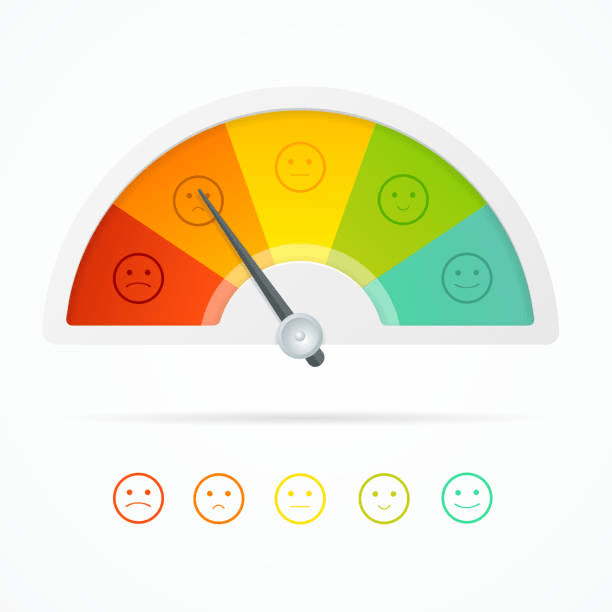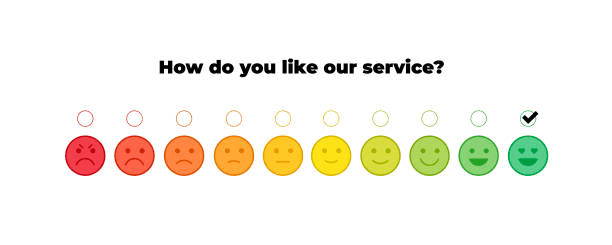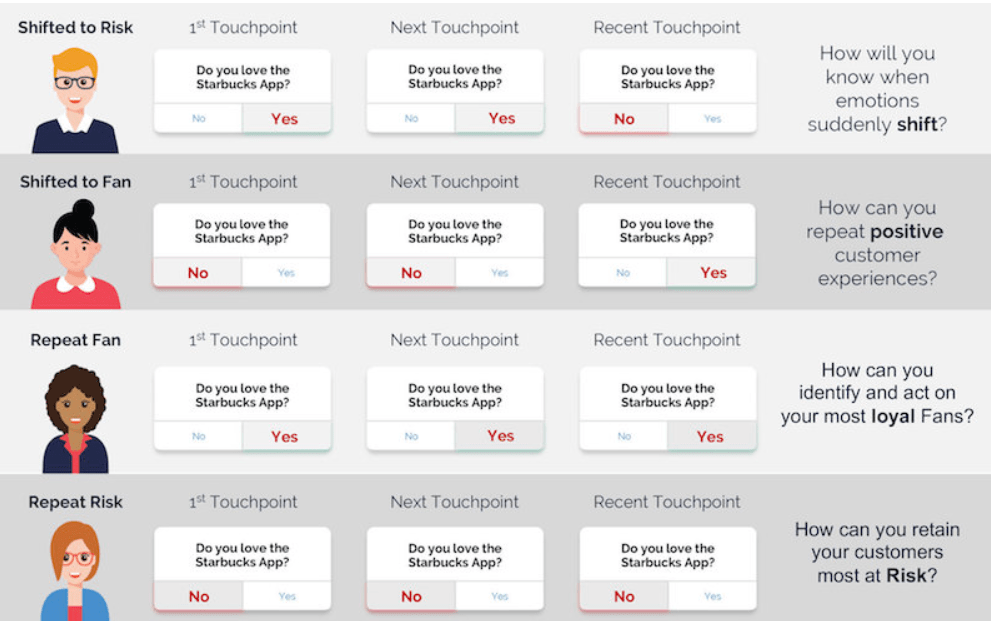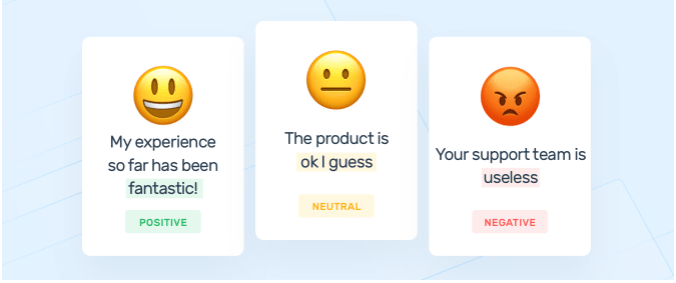The online marketplace is crowded with tons of options at present. You must offer some value and quality services to please your customers and stand out from the pack. The basics of business entail that your product must address and solve a problem for your customer. So once the customer learns that your service will fix their issue, they must find the motivation to proceed to the subsequent step- buying. Regardless of what you believe, no amount of features will compel them to make the purchase. In reality, their emotions propel them to make a decision.
Maya Angelou once said, “People will forget what you said, people will forget what you did, but people will never forget how you made them feel.” The statement remains true for businesses too! Emotions are the direct drivers of the purchase behavior of customers. More than 78% of millennials would spend money on a desirable experience over purchasing something. But how to know what the customer feels about your product and brand? Is there any trick to tap into their emotions? Well, settle down!
This article will give you an insight into what customer emotions mean, their significance, and some tried-and-tested strategies to measure those emotions. So keep reading!
What is Customer Emotion?

Customer emotions refer to the feelings customers experience about a product or company. It is a measurement of their overall satisfaction level when they interact with a particular brand. Emotions are substantial factors in any decision you make. The same goes for your customers. A bank witnessed a 70% increase in use among the segment and a 40% growth in new accounts after introducing a credit card that inspired emotional connection.
In the era of limitless alternatives, the fanciest features at the lowest price are not enough to convince customers to use your services. Pleasant experiences give more long-lasting happiness to customers than buying products. Further, you cannot ignore the role of emotions when making a decision. About 46% of consumers view customer experience as the primary booster of the buying decision, while only 20% consider pricing.
Why is it Important to Measure Customer Emotion?
Customer service is not a one-size-fits-all concept. That is why finding customers who stick with you for a long time is challenging. Consequently, understanding their feelings and emotions is the only way to retain and win more customers. Almost 95% of all purchasing decisions happen due to an emotional connection. Consumers may forget the quality of goods, but they will always remember how they felt during their customer experience.
As the saying goes, “if you can’t measure it, you can’t manage it.” Emotions bring valuable customers. You can express empathy and gain a lead by building trust and loyalty in the long run. Studies prove that emotional customers spend twice as much as satisfied customers. Brands and ventures can drastically improve consumer engagement and boost sales by aligning products with customers’ emotions. You should know your customers’ feelings to design tailored products that fulfil their needs.
How to Measure Customer Emotion?
Every customer is unique, and so are their emotions. The scale ranging from positive to negative comprises infinite midway points. Of course, there is no one particular way to measure feelings. And not many customers are excited to shout their feelings out loud. However, you surely can use some tactics to discern the rationale behind customers’ emotions to improve their experience and satisfy their requirements. Listed below are a few strategies to measure customer emotion:
1. Determine Who, Where, and How Often
The itinerary step to measure customer emotion is to perform it based on customer actions and behavior. Imagine you are shopping at your favorite store. How would you feel if the in-store sales associate cuts in between your conversation, asking if you require assistance or if they guide you to the fitting room before you pick an item? Frustrated, angry, irritated, or basically anything but happy, right? Hence, if you do not target or personalize your points to collect data about customer emotions, you may as well not measure the data at all.

Targeting will allow you to interact with customers once they have engaged with your app at a time that will not obstruct or disrupt their in-app experience. Consider the following attributes to attain success in measuring customer emotion:
● Determining Who
Who should be able to view and partake in the survey? Target customers based on essential factors, like actions people have taken in the app, their interactions, etc.
● Determining Where
Select the place where the eligible customers will see the interaction. Ensure it does not pop up when they are in the middle of an action or interrupt the flow.
● Determining How Often
The final round of targeting involves deciding how often you plan to display the interaction. It can vary contingent on the interaction type, like an informative note or a survey.
2. Focus on Expressed Sentiment
You can use feedback, reviews, and mobile actions to know the expressed sentiments of your customers. These expressed sentiments offer a glimpse into their emotions. You can divide customers into the following categories for measuring expressed sentiments:
● New or Repeat Fans
Customers who conveyed positive emotion for the first time by selecting ‘Yes,’ or have expressed a positive response twice.
● New or Repeat Risks
New or Repeat Risks are customers who shared negative emotions for the first time by answering ‘No,’ or have expelled negative emotion twice in a row.
● Fans shifted to Risks
Customers whose emotions have recently changed from positive to negative and became Risk from Fan
● Risks shifted to Fans
Customers whose emotions have recently deviated from negative to positive
Here is an example illustrating how shifts in customer sentiment visually appear.

3. Quantify the “Why” behind the Shifted Sentiment
Moods can quickly change depending on what is happening, yes? A single factor, whether external or internal, can upset customers and alter the whole map of their journey. Knowing how your customers feel about the experience is undoubtedly good, but it is better to comprehend how their feelings change over time. There can be various reasons that lead to sentiment shifts.

For instance, several customers say they no longer ‘love’ your brand and turn Risk from Fan. You can ascertain what changed in your online app experience and hopefully locate the cause. Expressed emotion assists in connecting the dots between what modifications in the product offering or app experience led to the shifted sentiments. You can run ahead of retention drop-off to retain your customers if a long-time Fan has abruptly become a Risk. Similarly, if a customer is a consistent Risk, you must take dramatic initiatives to withhold them.
4. Use Net Promoter Score
The more you know your customer and their current emotional stage, the more you can deliver them bespoke service to promise a helpful and engaging experience. Net Promoter Score offers some awareness of customer sentiments. It estimates how likely customers will recommend your service to their family and friends on a scale of 1 to 10.

There are three categories in the Net Promoter Score metric based on the answers customers give:
● Promoters
Customers with a score of 9 and 10 are loyal and may recommend your services.
● Passives
Customers with a score of 7 or 8 are unlikely to recommend you to others.
● Detractors
Customers with a score between 0-6 are unlikely to use your service repeatedly or recommend it to anyone. Instead, they may discourage potential buyers from engaging with your brand.
Besides displaying customer emotions, NPS is an effortless method to measure your brand growth.
5. Perform a Sentiment Analysis
How happy are your customers with the product quality? Will they stay loyal despite the rising competitors in the market? How often do they utilize your service? Such questions are necessary to probe into as they give insight into customer satisfaction.

And it is why analyzing customers’ sentiments is essential. The process includes collection, analysis, and action on customer feedback. You can split the comments based on whether they are positive or negative. For example, a customer writes, “I still haven’t found what I want.” It will count as a negative comment. You can bucket the sentiments into three groups- positive, negative, and neutral. It gives a hand in preventing churn rates and improving brand value.
Although customer emotion and customer sentiment are closely tied, they are different from one another:
- While emotions are raw and reactionary, sentiments are organized.
- Sentiments alter over time, whereas one event can trigger a change in emotion.
You must measure customer emotion and sentiments as the data will be incomplete without both.
Conclusion
People buy from people they like and love brands that connect with them. The more time you focus on selling the perks of your goods and services, the harder it will be to close a deal. Therefore, your first step should be racking your brain for ideas and identifying the emotions your customer encounters a problem that your service can resolve. Next, show them how your product can alleviate the issue and communicate the same to earn their trust and establish a genuine relationship.
Be empathetic and easily accessible via any channel. Actively listen to customers and guide them to the perfect customized recommendation that ticks all their needs. Turn every interaction into a relevant and memorable experience by sustaining an emotional connection. Please contact Maction Consulting for your Market Survey and Data Analytics needs.


